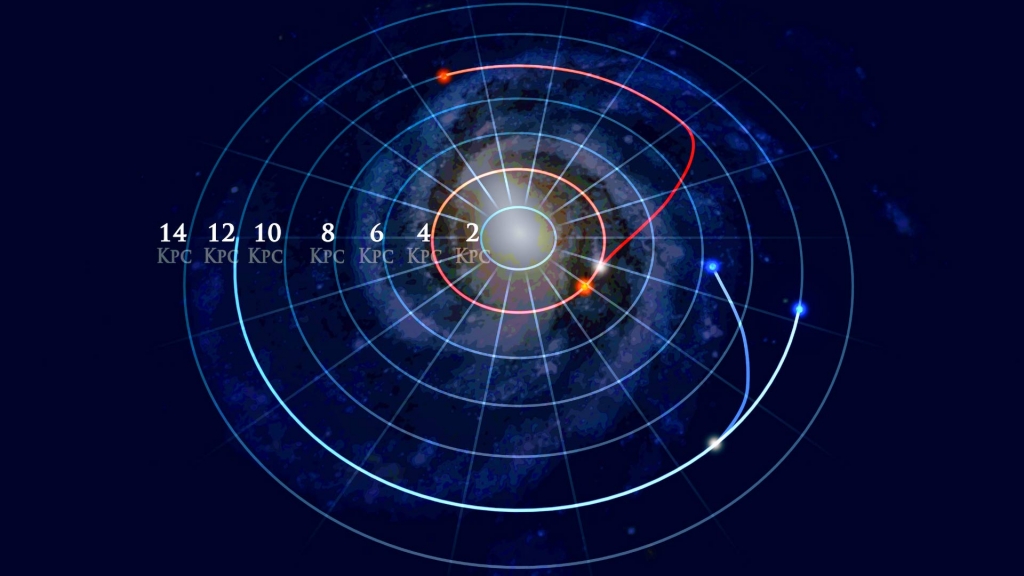-
Tips for becoming a good boxer - November 6, 2020
-
7 expert tips for making your hens night a memorable one - November 6, 2020
-
5 reasons to host your Christmas party on a cruise boat - November 6, 2020
-
What to do when you’re charged with a crime - November 6, 2020
-
Should you get one or multiple dogs? Here’s all you need to know - November 3, 2020
-
A Guide: How to Build Your Very Own Magic Mirror - February 14, 2019
-
Our Top Inspirational Baseball Stars - November 24, 2018
-
Five Tech Tools That Will Help You Turn Your Blog into a Business - November 24, 2018
-
How to Indulge on Vacation without Expanding Your Waist - November 9, 2018
-
5 Strategies for Businesses to Appeal to Today’s Increasingly Mobile-Crazed Customers - November 9, 2018
One-third of Milky Way stars have changed orbits
Would you believe that stars don’t stay in one place?
Advertisement
In order to build the map (and the ensuing animation), researchers used something called the Apache Point Observatory Galactic Evolution Explorer (APOGEE) spectrograph.
“We were able to measure the properties of almost 70,000 stars in our galaxy for this particular study using the innovative SDSS infrared spectrograph”, said Donald Schneider, Distinguished Professor of Astronomy and Astrophysics at Penn State and a coauthor of the study.
Michael Hayden, an NMSU astronomy graduate student and the study’s lead author, mentioned how people can travel even halfway around the world, away from their birthplaces.
Our Galaxy is a vast part of the universe, a very enchanting and compelling place where we live. After its birth approximately 13.5 billion years ago, scientists today created a new map of stars in the Milky Way, and it revealed an astonishing discovery. “From the chemical composition of a star, we can learn its ancestry and life history”, Hayden said.
This data and additional chemical information include the amount of light emissions measured at various wavelengths where specific elements and compounds are shown via linear visualizations for astronomers to read and predict the composition of the stars.
Astronomers can tell how old a star is by examining its spectroscopic signature, much like counting the rings on a tree to determine its age.
‘Stars create heavier elements in their cores, and when the stars die, those heavier elements go back into the gas from which the next stars form.’. Loop 1, marked by the dashed ellipse, is the yellow feature above centre, shading to purple, and the purple arc below centre.
A new map of the Milky Way has shown astronomers something surprising. One of these loops, dubbed Loop 1, accounts for a massive portion of our sky.
The enormous and breathtaking Milky Way Galaxy.
Jo Bovy of the Institute for Advanced Study and the University of Toronto said less heavy-element enrichment was noticed in the stars in the outer disk of the Milky Way. In some regions of the galaxy, star formation has proceeded more vigorously than elsewhere – and in these more vigorous regions, more generations of stars have formed. They found that 30 percent of the sample contained quantities of these elements that wasn’t typical for the location of the galaxy they were found in, meaning they had moved a long way from where they were born.
Prof Holtzman, Mr Hayden and co-authors used APOGEE data to map the relative amounts of 15 separate elements, including carbon, silicon, and iron, for their stellar sample.
How do stars migrate in the Milky Way?
Advertisement
Looking at the detailed pattern of abundant elements in their study, the team discovered that the data could be explained by a model where stars migrate radially. The irregularities seen in the spreading of mass in the galactic disk, similar to the Milky Way’s spiral arms, pushes it in the inward and outward stellar migration. Although evidence for stellar migration in the solar system’s neighborhood has been revealed in the past, this is the first time evidence for galaxy-wide migration has been uncovered.





























